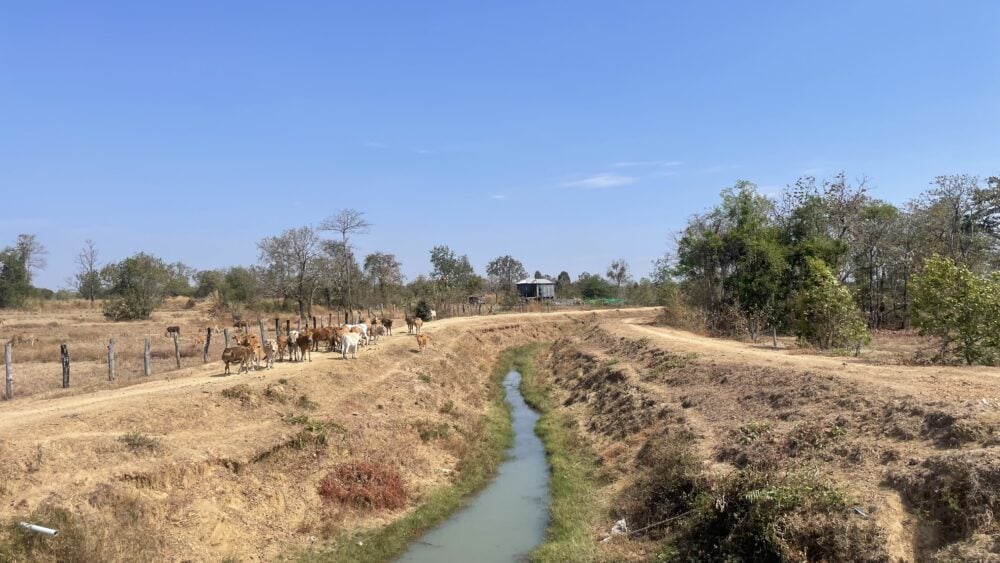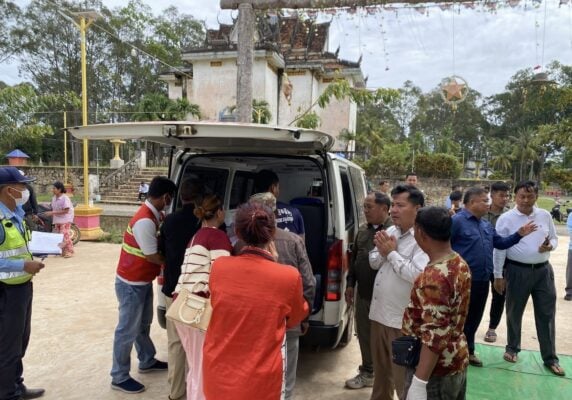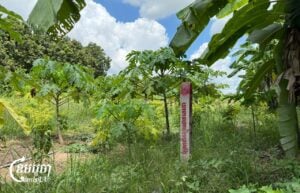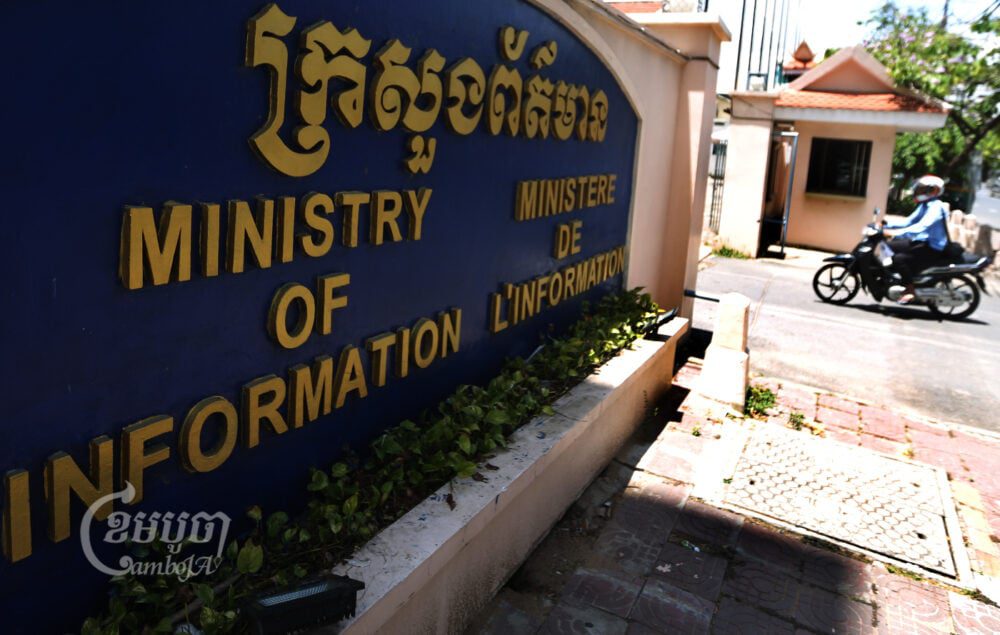STUNG TRENG, CAMBODIA — Led by a team of researchers from My Village Organization (MVi), a project was implemented and aimed to empower marginalized groups who take the brunt of climate change disasters along Mekong River to co-create disaster risk management plans, leveraging a multi stakeholder platform that brings together local leaders, NGOs, and government agencies by building local communities’ resilience and ensuring local planning includes a community resilience with water-energy-climate nexus approach.
Researchers have found that indigenous groups also face heightened vulnerability, with all five surveyed villages experiencing climate change impacts. Local administrations lack budgets for climate adaptation as well as water-energy-climate nexus analyses and gender-inclusive strategies — further hindering holistic resilience planning. Addressing these gaps is critical to developing equitable, long-term solutions for climate-affected communities.
Kry Solany, a researcher who led the project, said MiV used Gender Equality, Disability & Social Inclusion(GEDSI) approach during the project implementation for “benefit to all the marginalized groups” including women, youths, people with disabilities, indigenous people, LGBTQI, and widows.
“[We aim] to increase understanding on marginalized community’s resilience
(women, men, youths, people with disabilities, GLBTs and people from poor families) to climate change with water-energy-climate nexus approach with identified solutions for climate change among decision-makers and policy-makers at sub-national and national levels,” he says.
Dams and climate change impact on livelihood
Hydropower dams have had a dramatic effect on the Mekong river’s natural cycle over the last two decades, resulting in water diversion, low water levels in the dry season, and depletion of the sediment carried by the river, further threatening fisheries, agriculture, ecosystems and biodiversity.
To date, there are over 160 operational dams along the Mekong River and its tributaries, including 13 dams on the mainstream. On top of that, 88 hydropower projects are operational in the Lower Mekong Basin, with an installed capacity exceeding 13,257 MW. All 745 dams were completed or under construction throughout the Mekong River Basin. China operates a cascade of 11 dams on the mainstream within its borders, with several more planned or under construction, according to Mekong Dam Monitor Annual Report: 2023-2024 by Stimson Centre.
Sixty-year-old Phe Vath is one of the estimated 1,000 people living across the four villages that make up Koh Snaeng commune, which straddles the Mekong river. He says many residents also used to go fishing, but most of them have given up this job, with approximately few families out of 100 still practicing it.
“The number of fish has drastically declined, not like before,” says Vath. “In the past, we could do fishing to get fish for sale to supplement our income, but now we can hardly fish for cooking a meal.”

Cambodia’s fisheries are facing significant challenges, with a significant decline in fish catches. According to the Fisheries Administration, the total national fish catch dropped by 13.71% from 2019 to 2020, reaching 413,200 tons. This trend continued with a further 7.3% decline in 2021. Several factors contribute to this decline, including climate change, dams on the Mekong River, and illegal fishing. These issues not only affect fish stocks but also impact the livelihoods of fishing communities, who are experiencing reduced catches and economic hardship.
Impact of drought on livelihood
The impacts of climate change on the five research target villages in Stung Treng province also include experiences of floods and droughts, which have particularly affected community assets.
Droughts have severely disrupted Cambodia’s agriculture-dependent economy, with rice production—central to livelihoods and food security—hit hardest. Between 2009 and 2018, droughts damaged over 235,000 hectares of land annually, affecting millions of people and destroying 20,000 hectares of rice fields in 2018 alone.
By 2050, climate impacts could reduce Cambodia’s GDP by 10% without adaptation, with agriculture bearing the brunt. Erratic rainfall and rising temperatures exacerbate water shortages, triggering crop failures, food insecurity, and farmer indebtedness, particularly among rain-fed communities. Droughts also strain rural infrastructure, such as irrigation systems, worsening conflicts over water resources.
40-year-old Sron Bophong plants various vegetables on her 300 square meters garden near her house in order to make an extra income to improve her family’s livelihood. But she says she cannot plant it during the rainy season because these kinds of vegetables are less resilient to wet conditions. This comes to her concern during the dry season as the primary issue is the lack of adequate water for irrigation, which is crucial for crop growth. Without sufficient water, vegetables may wither and die.
“There is always a water shortage. It has always been a recurring issue as there is no water to pump from the canal to irrigate my vegetables,” she bemoans. “Therefore I have to use a water supply from a private service provider.”

To address drought impacts in Cambodia’s agriculture, Cambodia should focus on expanding irrigation systems and adopting drought-resistant crops. Implement early warning systems and community training in water conservation and crop diversification. In terms of that, strengthening policies by integrating climate resilience into national plans is also important as well as enhancing infrastructure and community capacity can mitigate drought effects and stabilize rural economies.
Irrigation systems are crucial for Cambodian agriculture, as they reduce reliance on rainfall and enhance crop predictability. During dry seasons, irrigation allows farmers to cultivate multiple crops, improving productivity and livelihoods. However, many systems are outdated, necessitating upgrades to support the country’s predominantly smallholder rice farmers.

Impact of flood on livelihood
Floods significantly impact Cambodia’s economy and agriculture, causing substantial losses in rice production—a mainstay of rural livelihoods. Over 40,000 hectares of rice paddies were impacted in 2024, an increase from over 22,000 hectares the previous 2023, and reported 17 fatalities linked to flooding, further affecting food security and exacerbating poverty.
Many villagers urge for effective management for quick recovery from flood disasters involving comprehensive planning and preparation. Therefore, ensuring the availability of supplies, shelters, and emergency response systems is crucial.
This includes establishing early warning systems, conducting regular drills, and maintaining infrastructure like flood control reservoirs and detention basins. Collaboration among stakeholders, such as the Mekong River Commission, is vital for transboundary flood management. Efficient management also involves integrating climate change considerations into land-use planning and development controls to minimize flood risks. By combining these strategies, communities can enhance resilience and expedite recovery from flood events.
Researchers believe that integrating climate change adaptation into national development plans and securing funding for climate resilience projects are crucial. Strengthening community capacity through training and support for adaptation strategies is essential for long-term economic stability in the agriculture sector. By combining these measures, Cambodia can reduce flood-related economic losses and ensure sustainable agricultural development.
Multi-stakeholder approach is essential to mitigate climate change impacts
A multi-stakeholder approach for climate change disaster is crucial for communities in Cambodia, as it empowers them to address the complex challenges of rising temperatures, erratic rainfall, floods, and droughts resulting in damaging homes, infrastructure, crops, and fisheries, exacerbating food insecurity and livelihood losses, especially among marginalized communities.
This collaborative framework brings together indigenous leaders, NGOs, government agencies, and private sectors to integrate traditional knowledge with scientific data, ensuring inclusive decision-making.
Community engagement is also crucial for disaster management success. The success of any localized activity depends on the willingness and ability of the community and households to adopt supportive activities to improve the resilience. Technical assistance supports risk monitoring and planning. Strong stakeholder cooperation is essential for harmonious efforts that accelerate resilience and sustainability, ensuring effective localized activities and enhancing community capacity to adapt to disasters.
In Tonsang Village, Siem Bok Commune, Siem Bok District, a village in which researchers garnered data, there are 147 indigenous Kuy families. Mostly they cultivate rice, cassava, and work as a laborer to eke out a living. They say they receive support from the United Nations Development Programme (UNDP) through My Village organization to encourage youth and women to raise awareness and engage themselves in addressing climate disaster.
While specific funding for empowering indigenous youth and women is not detailed in their village, UNDP indicates that UNDP has been working in partnership with the National Committee for Disaster Management (NCDM) since 2015 in building climate resilience across the country through “strengthening climate information and early warning systems”, “enhancing climate-responsive planning”, and “promoting local adaptation solutions”.
Kha Sros, a 65-year-old community leader in Tonsang, is at the forefront of addressing climate change and promoting community resilience in her village. However, her community faces significant agricultural challenges, primarily due to water scarcity. The villagers rely heavily on rainfall for irrigation, and their crops are frequently ravaged by pests. Despite efforts by NGOs to raise awareness about these issues, the villagers continue to struggle in finding practical solutions to these problems.
“We always face water scarcity to grow our crops which leads to financial loss for our livelihood. Most importantly, our crops are always destroyed by pests and we do not have any technical skills and support to tackle these issues,” Sros said.
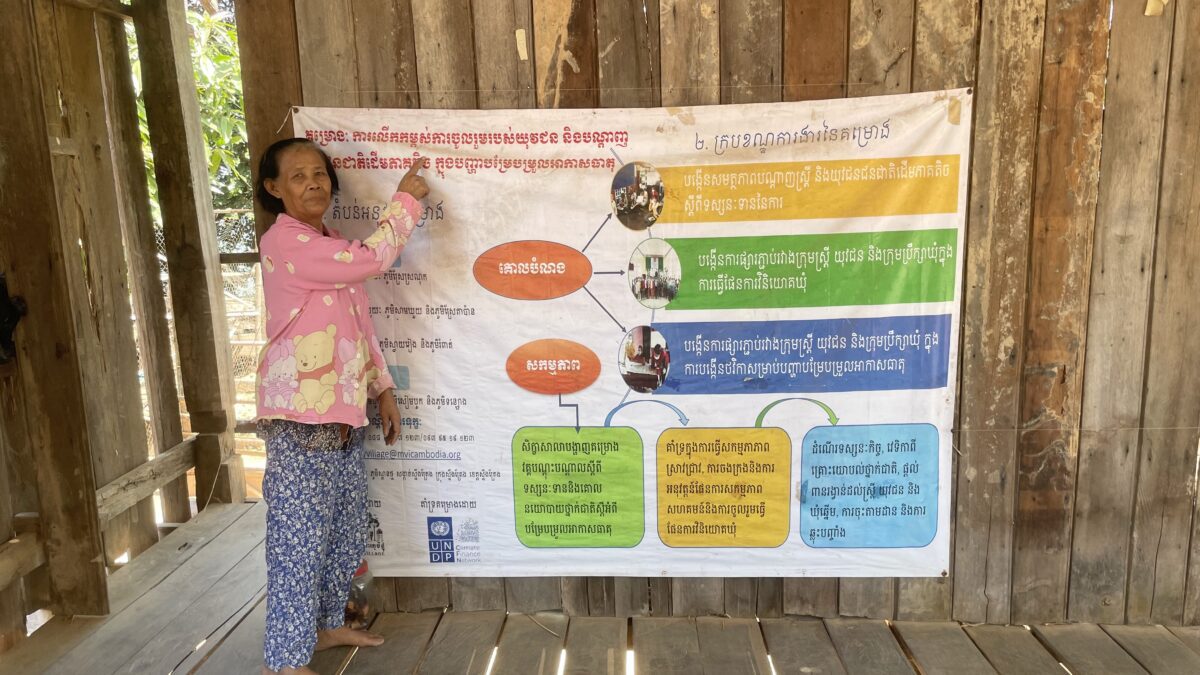
To address this, she urges relevant stakeholders to support the community in need of sustainable funding, technical expertise, and access to climate-resilient agricultural practices.
A Food and Agriculture Organization (FAO) report identified key challenges in Cambodia’s agricultural innovation system, including land degradation and limited adoption of conservation agriculture (CA) due to high input costs, lack of machinery, and weak market incentives. It highlights the need for multi-stakeholder collaboration, capacity building, and institutional strengthening. Policy dialogue recommended improving CA input supply chains, market development, and extension services to promote sustainable, climate-resilient agriculture through innovation, coordination, and farmer support.
Villagers say they need achievable collaborations with local organizations and government support that could provide the necessary resources to enhance agricultural resilience and empower women in addressing these challenges effectively for their community.
However, a report called “ Scaling up locally-led climate action in Cambodia” suggests that in Cambodia, community engagement from local authorities in addressing climate impacts is limited due to capacity constraints and competing development priorities. It adds that strengthening governance systems and integrating climate resilience into local planning can also bridge the adaptation gap.
Securing funding faces a challenge
Securing funding to address climate change issues in Cambodia, particularly at the sub-national level, is challenging due to several factors. Limited financial resources and technical capacity hinder local governments’ ability to integrate climate resilience into development plans. Less than 1% of commune budgets are allocated to climate-related investments, leaving a significant gap in addressing local needs. Additionally, accessing external climate finance from mechanisms like the Green Climate Fund involves complex eligibility criteria and lengthy processes.
Samkouy commune chief Khav Kham Orn shares this concern. She notes that communes like Samkouy in Stung Treng province receive limited funding, compelling them to seek additional resources from philanthropists and local initiatives to fulfill community needs while awaiting future national budget allocations. Furthermore, she highlights that funds specifically dedicated to addressing climate change impacts in her commune are particularly scarce, as most of the budget is focused on building essential infrastructure like roads.
“We have discussed with relevant parties to find ways to ensure that our commune has sufficient funds to address climate change impacts more broadly in the future, as these funds are currently very limited,” she says.
She urges the national government to increase the development budget, as well as adding funding for climate change impact management to the budget allocation.
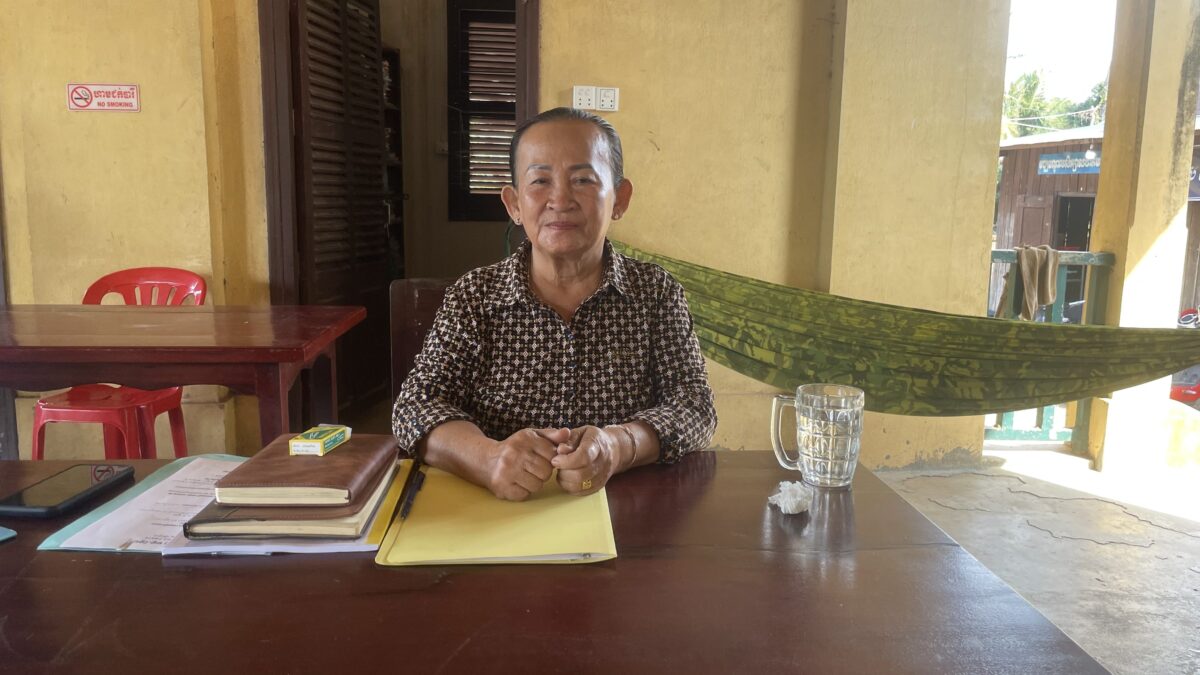
Cambodia should enhance awareness among local governments about climate risks and provide training to build technical capacity. Strengthening the Commune/Sangkat Investment Fund and integrating climate resilience into local planning can help optimize fiscal transfers. Furthermore, mobilizing additional financial resources through innovative financing mechanisms and international partnerships is crucial. Scaling up successful incentive mechanisms like the Performance-Based Climate Resilience Grant can also support sub-national climate initiatives.
The Importance of Inclusivity and Gendered Approach
Inclusive strategies incorporate insights from various stakeholders, including marginalized groups, to create more resilient and adaptable solutions. This ensures that resources and benefits are distributed fairly, reducing disparities and enhancing overall community resilience. By engaging diverse perspectives, communities can develop tailored responses that address specific local needs, fostering a more equitable and sustainable environment for all members.
Gendered approaches are essential because they recognize the disproportionate impacts of climate change on women. Women often face more pronounced consequences due to societal roles and limited access to resources. By integrating gender considerations into climate policies, women’s participation in decision-making processes increases, leading to more effective and sustainable solutions. Empowering women in this context not only addresses gender disparities but also enhances the overall resilience of communities by leveraging diverse perspectives and skills.
Without inclusivity and gendered approaches, climate change strategies may overlook critical vulnerabilities and needs, leading to ineffective interventions that exacerbate existing inequalities. This can result in wasted resources and missed opportunities for sustainable development. By integrating these perspectives, Cambodia can develop more holistic and impactful climate resilience strategies that benefit all community members and foster long-term sustainability.
Bun Puthy, spokesperson for the Ministry of Women’s Affairs, did not respond to inquiries about how the ministry includes vulnerable women’s voices, their roles, or support in Cambodia’s climate change initiatives.
Knowledge sharing and good practices among community themselves
Knowledge sharing and good practices among communities are vital in addressing climate change in Cambodia. Training and awareness-raising programs help communities prepare and respond effectively. Targeted initiatives for women, children, older people, and persons with disabilities ensure inclusivity. For instance, training women in leadership roles empowers them to participate in decision-making processes, enhancing community resilience. Such practices foster a culture of cooperation and mutual support, enabling communities to better mitigate and adapt to climate impacts. This inclusive approach ensures that all members contribute to and benefit from climate resilience efforts.
How non-profit sector can make a change
In Koh Snaeng village several villagers have received funding from Oxfam in Cambodia to install solar panels and water tanks, along with training to enhance the community’s capacity in solar operations and maintenance. However, this support is insufficient, and the community requires further assistance from all stakeholders to build resilience and ensure sustainable development.
Oxfam has been a key supporter of Cambodia’s development, collaborating with local partners, community groups, government entities, and stakeholders nationwide. Their comprehensive programs encompass sustainable livelihoods, humanitarian aid, disaster preparedness, governance, civic engagement, agriculture, and climate change adaptation, aiming to build a resilient society free from poverty and injustice.
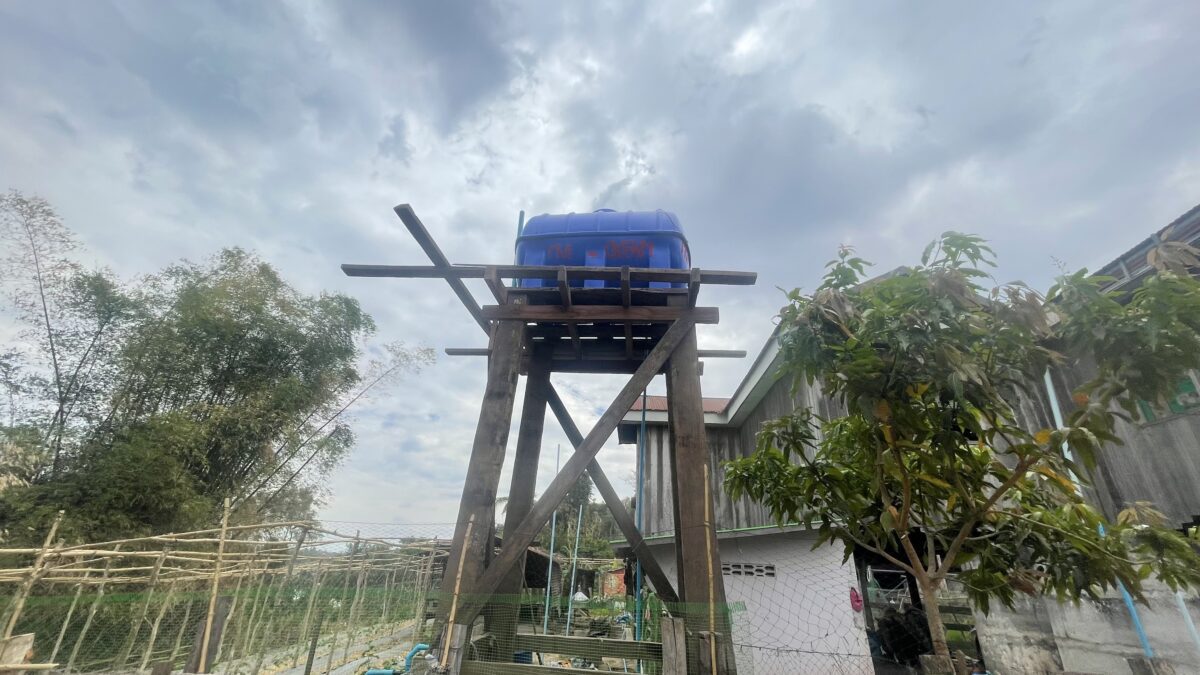
Organizations like My Village Organization, UNDP, Oxfam, Plan International, and many more have made significant contributions to disaster risk management and development initiatives in Cambodia. Bilateral and multilateral partnerships are essential for supporting Cambodia’s national efforts in achieving inclusive development and disaster response goals. Donor assistance plays a critical role in helping the country manage the financial burdens associated with climate change and disasters.
Kry Solany says partnerships with NGOs not only help to garner financial support but also bring technical expertise and collaborative frameworks that can help Cambodia strengthen its disaster response and development strategies. By leveraging these partnerships, Cambodia can better address the impacts of climate change and enhance its resilience against future disasters, he adds.
“The findings will also serve as concrete evidence for advocacy with commune administrations and district administrations to increase budget allocations for climate change impacts with a focus on the water-energy-climate nexus,” he emphasizes.
Note: This story is produced by the media-research partnership fund coordinated by SEI Asia with the generous support of DFAT, Government of Australia.


